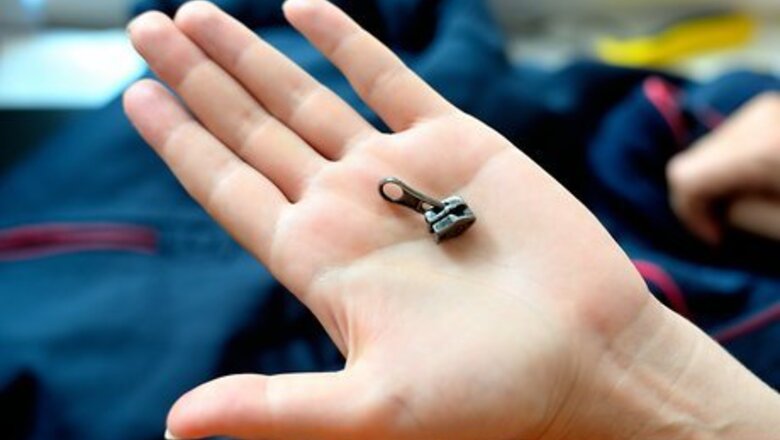
views
Removing Zipper Teeth to Get the Pull Back On
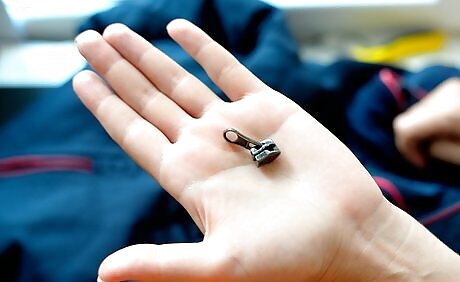
Get a new zipper pull if yours is damaged. If your slider is broken and not working properly, then you will need to buy a new one. You can find a replacement zipper slider in a craft store. Make sure to get a replacement zipper pull that is the same size and style as your old one for the best results. Bring the old one along for comparison. You can also purchase a zipper repair kit at most craft stores and it will contain everything you need to replace the pull and add top stops and square tabs as needed. Otherwise, you will need to buy the replacement zipper pull, and stop tabs or top stops separately.
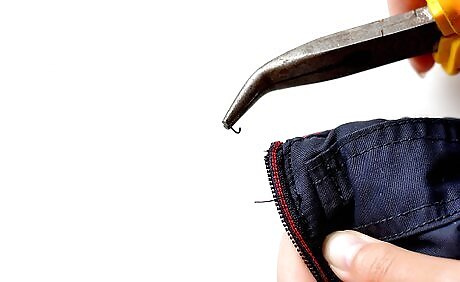
Pull the teeth off the end of the zipper with pliers. To get the zipper back on, you will need to expose some of the fabric at the end of the zipper. Pull the zipper teeth off one at a time using a pair of pliers. Keep removing teeth until you have exposed about 2” to 3” (5 cm to 7.6 cm) of the fabric. Expose the smallest amount of fabric necessary to get the zipper pull back on. If you have a large zipper pull, then this will be closer to 3” (7.6 cm). If you have a small zipper, then you may be able to expose only an inch or two. Consider the status of the zipper before you pull off the teeth. If the zipper is open, then you will need to pull the teeth off at the bottom of the zipper. If the zipper is closed, then you will need to pull the teeth off at the top of the zipper. Make sure that you expose the same amount of fabric on both sides of the zipper as well. If the sides are uneven, then you may not be able to get the pull back on.
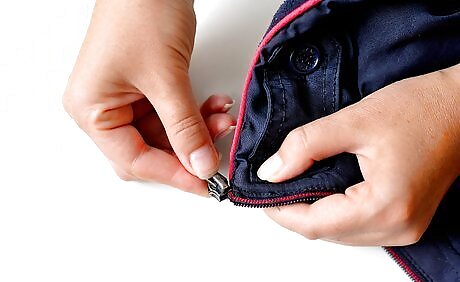
Work the zipper pull onto the fabric. The direction of the pull will be different depending on whether the zipper was open or closed when the zipper came off. If the zipper was open, then slide the pull onto the fabric upside down, so that the pull is directed away from the zipper. If the zipper was closed, then slide the pull onto the fabric right side up, so that the pull is directed towards the zipper.

Tug on the sides of the zipper above the pull. To get the zipper pull from the fabric part of the zipper to the zipper part of the zipper, you will need to tug on both sides of the fabric above the zipper pull. This will create tension and move the pull towards the zipper teeth. Keep tugging until you feel a click. This indicates that the zipper pull is on the teeth again.
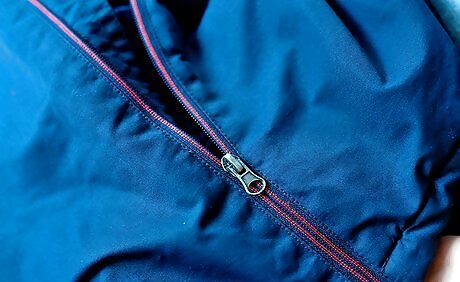
Test the zipper after you put the pull back on. Try to move the zipper up and down a few times to see how it is working. When the zipper is back on the zipper teeth, it should zip up and down with ease. If it is crooked or not moving, then you may need to start over and try again. Make sure that you do not zip the zipper off the track again before you secure the end with a new top stop or square tab.
Adding Top Stops and Square Tabs

Consider whether top stops or square tabs are best. After removing some teeth from your zipper, you will need to replace some of the teeth with top stops and/or square tabs to prevent your zipper pull from coming off the zipper again. Top stops are small pieces that go on one side of your zipper. Square tabs are larger pieces that will bridge across your zipper and prevent the zipper from coming down on both sides while also covering the gap between the zipper sides. Top stops are best for the top of your zipper because they will prevent the slider from coming off again, but they will not prevent you from opening and closing the zipper. Square tabs (also known as zipper bottom stops) are best for the bottom of a zipper because they will prevent the zipper from coming off and cover the gap in the zipper left by the missing teeth.
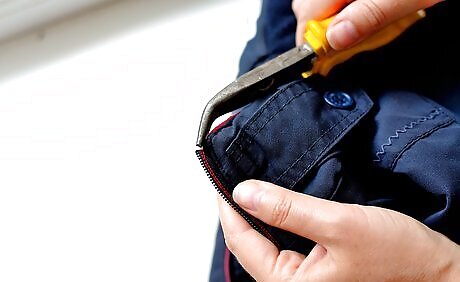
Squeeze a top stop onto the zipper with pliers. If you want to add a top stop to keep your zipper from coming off the slider at the top, then place the top stop right above the first tooth at the top of your zipper. The zipper will need to be slightly open for you to do this. After you have the top stop where you want it to go, use the pliers to crimp the top stop into place. Make sure that the top stop is snug and will not move or come off when you pull on it. Place a top stops on both sides of the zipper to ensure that the zipper will not come off of the track again.
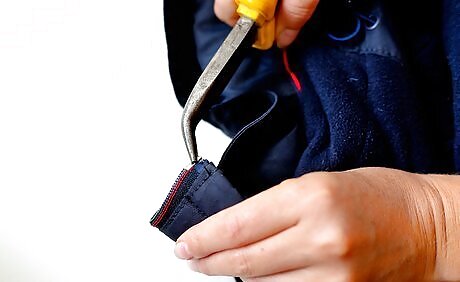
Push the square tab’s prongs into place. If you want to use a square tab to close the gap at the bottom of a zipper, then take the square tab and push the prongs through the zipper fabric on both sides of the zipper. Insert the prongs right below the bottom teeth of the zipper. Make sure that the zipper is closed when you do this. After pushing the prongs through, turn the garment or fabric over and use your pliers to bend the prongs inward. Make sure that you crimp the prongs down well so that the tab is secured and the prongs are flat. It is important for the prongs to be flat so that they will not snag on anything or scratch your skin.

Finished.















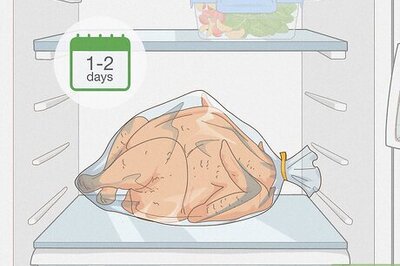
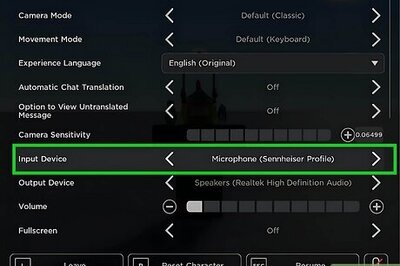


Comments
0 comment